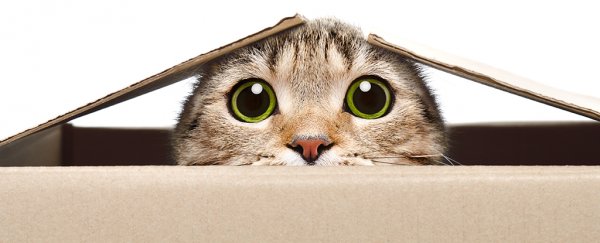Schrödinger's cat is a hypothetical animal featuring in a thought experiment proposed by the Austrian physicist Erwin Schrödinger in 1935.
Physics at the time was debating mathematical models and the results of various experiments that suggested particles have wave-like properties. Those waves, some thought, were more like the curve of a probability on a graph than a physical wiggle, like a ripple through water.
Certain implications of this 'probability' description – referred to as the Copenhagen interpretation – considered reality as unsettled until it was part of a system we could observe. In other words, properties weren't defined in any meaningful sense until they were measured in some way by an experiment.
Notable physicists such as Albert Einstein opposed this interpretation, claiming quantum physics was an incomplete theory and future work would reveal what those waves really were.
Erwin Schrödinger agreed. In an essay titled The present situation in quantum mechanics he criticised such strange definitions of probability by posing an experiment that connected the uncertainty of a particle's unobserved property with something we can all relate to and empathise with – the living state of a small animal.
"One can even set up quite ridiculous cases," Schrödinger wrote. "A cat is locked up in a steel chamber, along with the following device …"
This device featured a radioactive material by a Geiger counter set to trigger the destruction of a vial of deadly acid the moment it is affected by a particles' decay. According to the Copenhagen Interpretation, the undecided position of a particle colliding with the counter would both hit and not hit it at any one moment, meaning the hidden cat would both be killed and not killed. Only once the whole experiment is observed would the cat be decidedly alive or dead.
Schrödinger thought this was silly, and many physicists agreed.
Of course, the experiment isn't exactly pet friendly. But less unethical versions of it have been done. Decades later, quantum physics still sounds silly, but it's more likely than ever that our poor cat in its box would indeed be both theoretically alive and dead at the same time after all.
Exactly what terms like 'measured' or 'experiment' mean, however, aren't so clear, making it uncertain to say where Schrödinger's box and its dead-not-dead cat really begins and ends.
All topic-based articles are determined by fact checkers to be correct and relevant at the time of publishing. Text and images may be altered, removed, or added to as an editorial decision to keep information current.
